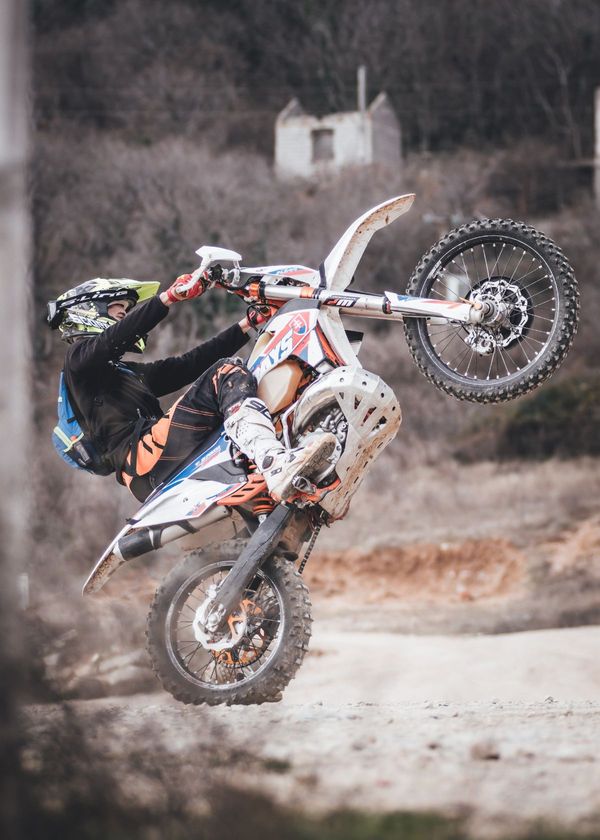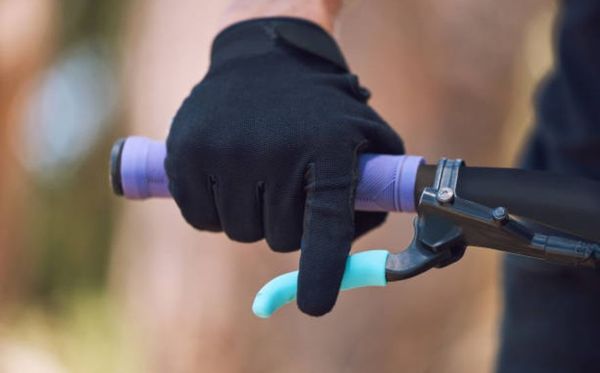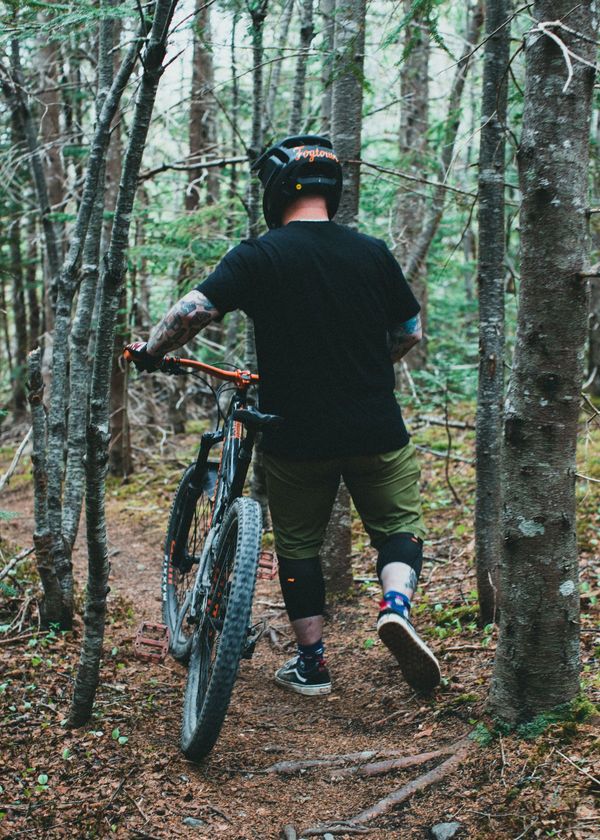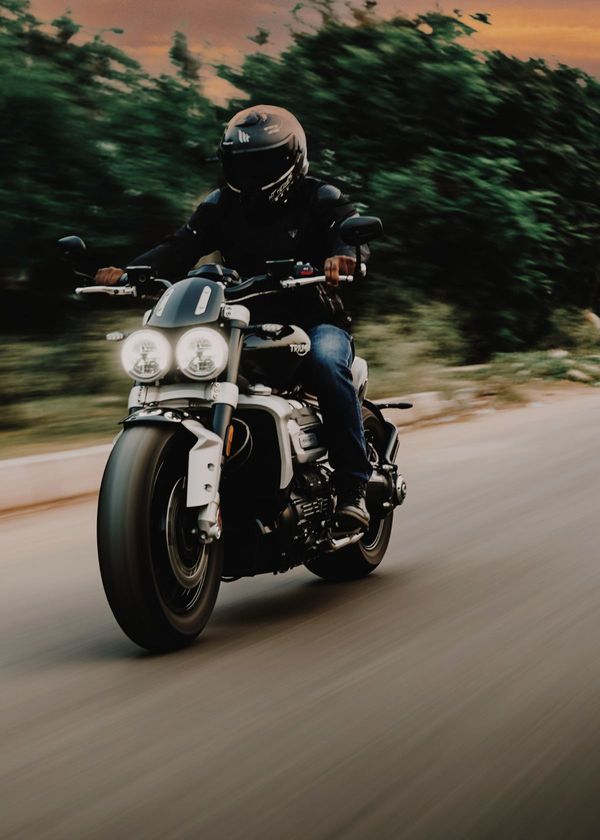The wind rushes past your ears as you hurtle down the rocky trail, your heart racing with excitement. The world blurs around you, but you stay focused on the path ahead. Suddenly, you hit a sharp turn, and your mountain bike leans into it effortlessly, responding to your every command. What's the secret to this control and precision? It all starts with the optimal mountain bike handlebar setup.
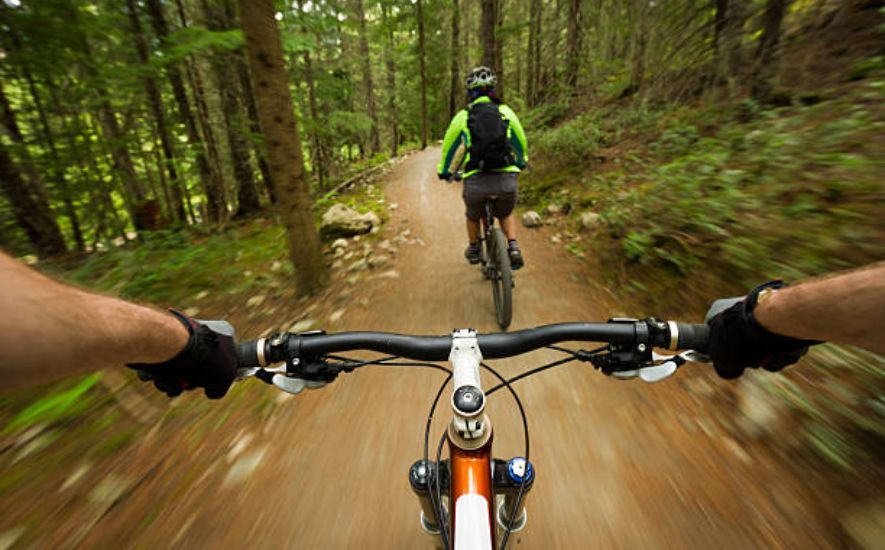
Choosing the right handlebars for your mountain bike can make all the difference in your ride. The right setup can help you find the perfect balance between stability and agility, allowing you to easily tackle any terrain. But with so many options available, it can be overwhelming to know where to start.
Do you prefer wider handlebars for more control or narrower ones for greater speed? Should you go for a flat or a riser bar? And how do you choose the perfect stem length to match your riding style? In this guide, we'll explore all these questions and more, helping you find the ideal handlebar set up to take your mountain biking to the next level.
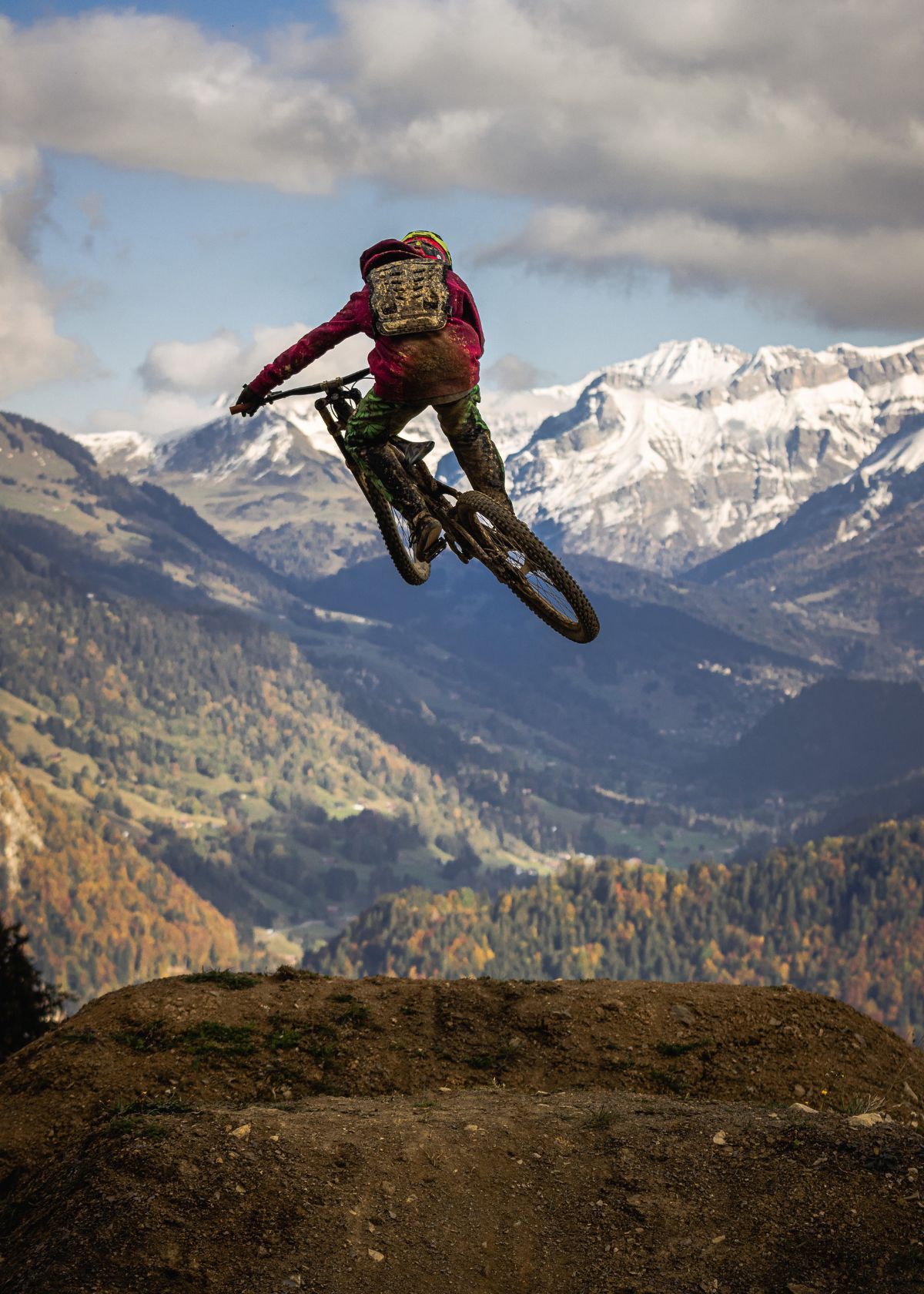
The Science of Control Mountain Bike Handlebar
Mountain biking is a thrilling and adventurous sport requiring exceptional control and skill to navigate difficult terrain. One of the most crucial components of a mountain bike is its handlebar, which plays a critical role in the rider's control and performance.
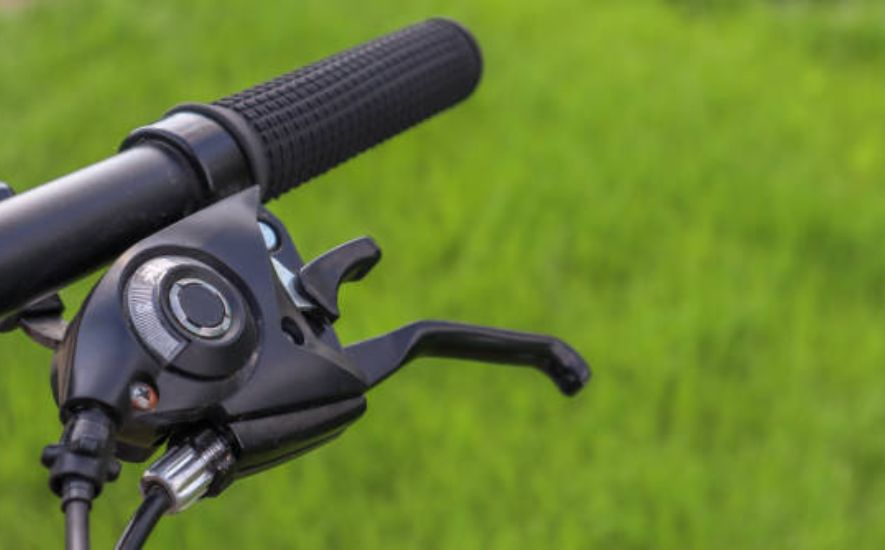
Understanding the Basics of Control Mountain Bike Handlebar
The handlebar is a critical component of any mountain bike, providing the rider with a platform to control the bike's direction, speed, and balance.
The handlebar is attached to the bike's stem and is typically made of lightweight materials such as aluminum or carbon fiber, designed to absorb shock and provide stability.
The design of the handlebar can vary widely, with different shapes, sizes, and widths, each providing unique benefits to the rider.
Different Types of Mountain Bike Handlebars
There are several types of mountain bike handlebars, each designed to cater to different riding styles and preferences. The most common types are:
Flat Handlebars
Flat handlebars are the most straightforward design, featuring a simple, straight bar that extends from the stem. These handlebars are ideal for riders who prefer an upright position and want maximum control and stability. They also provide a wide grip, allowing riders to steer the bike with their elbows and shoulders.
Riser Handlebars
Riser handlebars are similar to flat handlebars but feature a slight upward bend, giving riders a more comfortable and upright position. These handlebars are ideal for riders who prefer a more relaxed riding position and need additional knee and leg clearance.
Drop Handlebars
Drop handlebars are typically found on road bikes, but some mountain bikers prefer them for downhill and cross-country riding.
These handlebars feature a curved design that drops down and away from the stem, providing riders with an aerodynamic riding position and improved speed. They are also ideal for riders who need to navigate through tight spaces and narrow trails.
Understanding Handlebar Width
The width of the handlebar plays a critical role in the rider's control and stability. Wider handlebars provide more leverage and stability, giving riders greater control over the bike's direction.
However, they can also be more challenging to maneuver in tight spaces. Narrower handlebars, on the other hand, provide better maneuverability but may compromise stability and control.
Finding the Right Handlebar for You
The type of handlebar you choose depends on your riding style, preference, and comfort. It's essential to try out different types of handlebars to find the right fit for you. Consider factors such as riding terrain, riding style, and body measurements when selecting a handlebar.

The Ergonomic Bliss
Picture yourself atop a majestic mountain, the crisp air filling your lungs as you prepare for an exhilarating ride down the rugged terrain. In moments like these, the last thing you want is to be hindered by discomfort or lack of control.
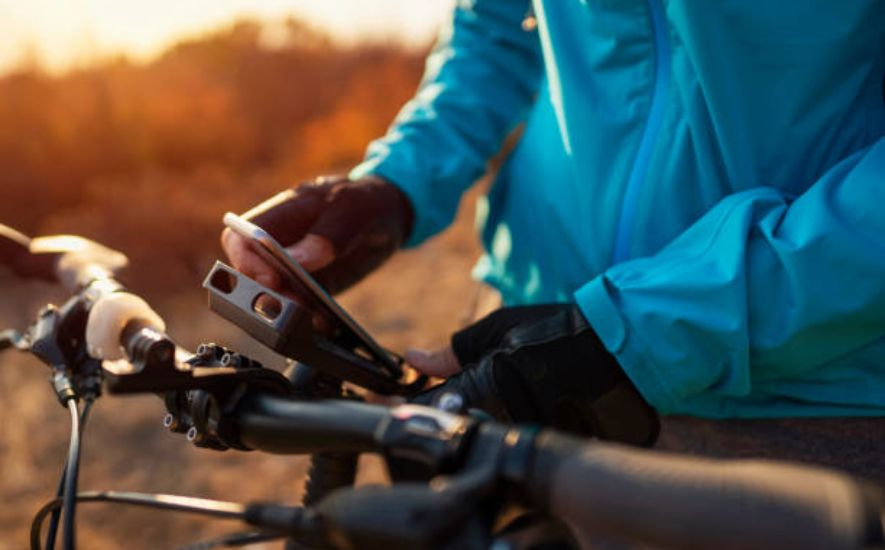
That's where the art of the optimal mountain bike handlebar setup comes into play, offering a harmonious blend of ergonomic design, personal customization, and unparalleled bliss.
The Anatomy of Ergonomic Perfection
The other carbon bars serve as the crucial point of contact between rider and bike, and their design can make all the difference in how your adventure unfolds. To achieve ergonomic bliss, attention must be given to key elements such as width, rise, sweep, and material.
a) Width: Finding Your Sweet Spot
The width of your handlebars greatly influences your riding comfort and control. A wider stance provides enhanced stability and control over rough terrain, while narrower alloy bar offer a more aerodynamic bar position for speed-focused rides. Experimentation is key here, as personal preference and body proportions play a significant role in determining the optimal width for each rider.
b) Rise: Reaching New Heights of Comfort
The rise of your handlebars affects your riding posture and overall comfort. A higher rise can alleviate strain on the wrists and back, promoting a more relaxed and upright riding position.
Conversely, a lower rise may enhance maneuverability and a forward-leaning posture for tackling challenging descents. Striking the right balance between rise and comfort is a delicate dance, one that requires fine-tuning to suit individual needs.
c) Sweep: Curves that Embrace Your Hands
The sweep of your handlebars refers to the degree of curvature from the stem to the grip area. An ergonomic sweep design ensures your wrists align naturally with your forearms, minimizing fatigue and discomfort. A moderate sweep angle of around 6 to 9 degrees is often considered optimal, but once again, personal preference plays a vital role in finding the perfect match.
d) Material: The Touch of Quality
Handlebars come in various materials, each with its unique characteristics. Aluminum, renowned for its lightweight nature, offers durability and affordability. Carbon fiber, on the other hand, provides excellent vibration damping properties and a more refined ride feel.
Choosing the right material not only affects the weight and performance of your bike but also contributes to the overall tactile experience.
Personalization: Tailoring the Experience
No two riders are exactly alike, and the beauty of the optimal mountain bike handlebar setup lies in its versatility and potential for customization. Here, we explore a few additional considerations to fine-tune your riding experience.
a) Grips: Finding the Perfect Hold
The grips on your handlebars act as the direct interface between your hands and the bike, influencing comfort, control, and vibration damping.
Ergonomically shaped grips with varying thickness options allow you to find the ideal balance between a secure hold and reduced hand fatigue. The choice between lock-on and slip-on grips further adds to the personalization aspect, catering to individual preferences.
b) Controls: A Seamless Extension
The positioning of the brake lever, gear shifters, and dropper post lever remotes on your handlebars is crucial in achieving a seamless riding experience.
Ensuring these controls are within easy reach, and aligned with your hand position and riding style allows for quick and intuitive operation. Attention to detail in this aspect enhances both safety and performance, unlocking the full potential of your mountain bike.

Mastering the Art of Control
Mountain biking is a thrilling adventure that combines physical endurance, skill, and adrenaline-pumping excitement. Whether you're a seasoned pro or just starting out, having the right handlebar setup can make all the difference in your ride.

The Importance of Handlebar Setup
The handlebar is the primary point of contact between the rider and the bike. A proper handlebar setup can improve your overall control, reduce fatigue, and enhance your riding experience. By adjusting the height, width, and sweep of your handlebars, you can optimize your position on the bike, improve your grip, and gain more stability.
Finding the Right Handlebar Height
The height of your handlebar determines your riding position and can affect your balance and control. The general rule of thumb is to have your handlebar at the same height as your saddle or slightly higher. This position can help you maintain a neutral spine position, reduce upper body fatigue, and provide more control over the bike.
However, some riders prefer a lower handlebar position for more aggressive riding and better aerodynamics. Lower handlebars can also provide more leverage for climbing and descending steep terrain.
Adjusting Handlebar Sweep
Handlebar sweep refers to the angle of the handlebar in relation to the stem. The sweep can affect your hand position, wrist angle, and overall comfort while riding. Most handlebars have a slight sweep back towards the rider to promote a natural wrist angle and improve grip.

Unleashing Speed and Efficiency
When it comes to mountain biking, a proper handlebar setup is crucial to ensure speed, efficiency, and most importantly, safety. The handlebars are the primary contact point between the rider and the bike, and as such, any discomfort or inadequacy in their setup can greatly affect the overall performance of the ride.
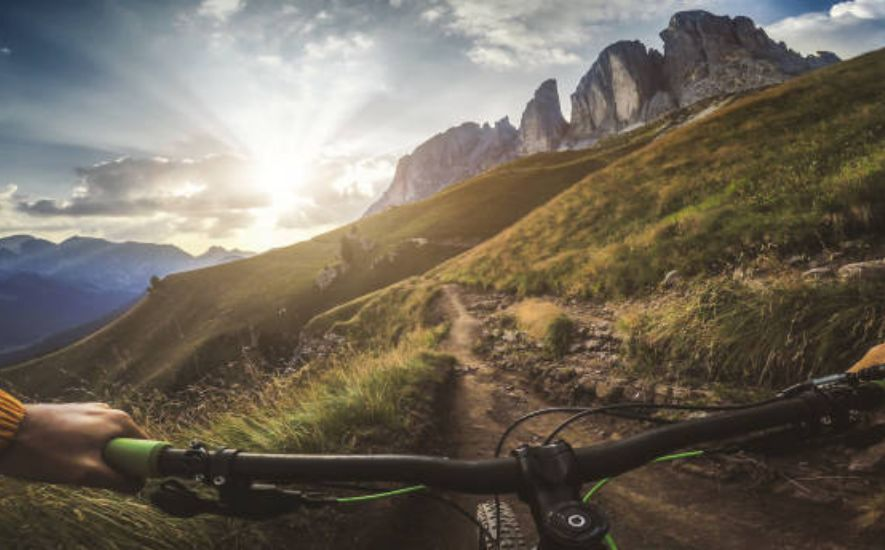
Choosing the Right Handlebar Width
The first step in optimizing your handlebar setup is to choose the right handlebar width. Handlebars come in various widths, ranging from 600mm to 800mm, with the most common width being 760mm.
The general rule of thumb is that the wider the handlebar, the more control, and stability you'll have over the bike, but at the cost of maneuverability. On the other hand, a narrower handlebar will allow for more agility and quicker handling, but at the expense of stability.
To find the perfect width for your handlebar, consider your riding style and the terrain you'll be riding on. A narrower handlebar will serve you better if you're into technical, narrow trails with lots of twists and turns. However, if you're into fast descents and open trails, a wider handlebar will provide more stability and control.
Choosing the Right Handlebar Sweep
The sweep, or the angle at which the handlebars are bent back towards the rider, is another important factor to consider when optimizing your handlebar setup.
Most handlebars come with either a flat, 5-degree, or 9-degree sweep. A flat sweep provides a more forward-leaning riding position, while a 9-degree sweep offers a more upright position.
The choice of sweep largely depends on your preference and riding style. If you're into technical, steep climbs, a flat sweep will allow for a more aggressive riding position and greater control. However, a 9-degree sweep will provide a more comfortable and relaxed position if you're into long-distance rides.
Adjusting Handlebar Roll
The roll of the handlebar, or the angle at which it's rotated around the stem, can greatly affect your riding comfort and performance. A handlebar that's rolled too far forward will put excessive strain on your wrists and forearms, while a handlebar that's rolled too far back will cause you to lean too far forward, reducing your ability to apply power to the pedals.
To find the optimal roll for your handlebar, start by positioning it straight ahead and then adjust it up or down as needed. As a general rule, the handlebar should be rolled slightly back towards the rider to reduce wrist strain and promote a more neutral wrist position.

Taming the Terrain
As a mountain biker, one of the most important components of your ride is your handlebar setup. Getting your handlebars dialed in just right can make a world of difference in terms of comfort, control, and performance on the trails.
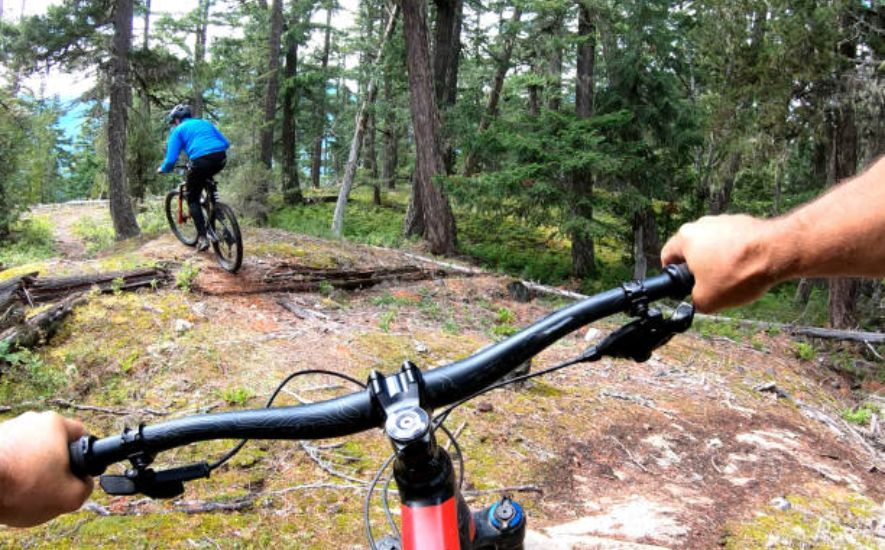
Rise
The rise of your handlebars determines how high or low your grips will be relative to your stem and fork. A higher rise can be more comfortable for riders with back or neck problems, while a lower rise can be more aerodynamic and provide better handling.
Sweep
The sweep of your handlebars refers to the angle at which they bend back towards you. More sweep can be more comfortable for riders with wrist pain or discomfort, while less sweep can provide better handling and control.
Material
Handlebars can be made from a variety of materials, including aluminum, carbon bars, and titanium. Each material has its own unique properties and characteristics, so choose the material that best suits your riding style and needs.
Getting the Right Stem
The stem is the component that attaches your handlebars to your fork and frame. When selecting a stem, you'll want to consider several factors, including length, angle, and material.
Length
The length of your stem will determine your reach to the handlebars. A longer stem will give you a more stretched out riding position, while a shorter stem will be more upright and comfortable.
Angle
The angle of your stem determines the angle at which your handlebars will sit relative to your fork and frame. A steeper angle can provide better handling and control, while a shallower angle can be more comfortable.
Material
Stems can be made from a variety of materials, including aluminum, carbon fiber, and titanium. Each material has its own unique properties and characteristics, so choose the material that best suits your riding style and needs.

Frequently Asked Questions (FAQs)
In this FAQ guide, we aim to address common questions and provide insights into achieving an optimal mountain bike handlebar setup. Whether you're a beginner seeking guidance or an experienced rider looking to fine-tune your setup, we'll cover essential aspects such as handlebar width, rise, sweep, material, and ergonomic considerations.
How should MTB handlebars be set up?
Answer: Setting up your mountain bikes (MTB) handlebars is crucial for optimal comfort and control while riding. Begin by adjusting the handlebar height to suit your riding style. Some riders prefer a lower position for aggressive downhill rides, while others opt for a higher position for improved visibility and endurance.
Next, consider the bar width. It's generally recommended to align the width of your handlebars with the width of your shoulders. This provides better stability and control, allowing you to navigate through tight trails with ease.
Furthermore, take note of the handlebar roll, which refers to the angle of the handlebars in relation to the stem. Experiment with different angles to find the most comfortable position for your wrists and hands. A slight upward roll can alleviate strain on your wrists during long rides, while a level roll might be preferable for riders who prioritize aggressive handling.
Lastly, ensure that your brake levers and shifters are easily accessible and within reach of your fingers. This promotes quick and effortless braking and shifting, enhancing your overall riding experience.
Where should my handlebars be on a mountain bike?
Answer: Determining the ideal position for your handlebars on a mountain bike involves finding a balance between comfort, control, and riding style. As a general guideline, start by positioning your handlebars at a height that allows a slight bend in your elbows when gripping them. This relaxed arm position helps absorb shocks and provides better maneuverability on challenging terrains.
Consider the terrain you typically ride on. For aggressive downhill rides, lowering your handlebars can enhance stability and control, as well as facilitate a more aerodynamic position. Conversely, if you enjoy long endurance rides or technical climbs, raising your handlebars slightly can help alleviate strain on your back and neck.
Regarding width, aim to align your handlebars with the width of your shoulders. This width provides a balanced stance and optimal control over your bike. However, keep in mind that individual body proportions and preferences may require slight variations.
Another factor to consider is the handlebar roll, which determines the angle of your handlebars in relation to the stem. Experiment with different rolls to find a neutral position that feels natural and comfortable for your wrists and hands. A slight upward roll can alleviate pressure on your wrists, while a level roll may be more suitable for aggressive riding styles.
What is the correct handlebar angle for a mountain bike?
Answer: Determining the correct carbon bar angle for your mountain bike is crucial for comfort, control, and efficient riding. While there is no universally "correct" angle, there are general guidelines to consider based on your riding style and personal preference.
For most riders, a handlebar angle that is parallel to the flat ground or slightly angled upward works well. This position allows for a neutral wrist alignment, reducing strain and fatigue during long rides. It also provides a balanced weight distribution between the rear and front wheel, enhancing control and handling.
However, some riders may prefer a more aggressive setup with a slightly downward angle. This position shifts the weight slightly forward, optimizing handling in technical descents and steep trails. It can also contribute to a more aerodynamic riding posture.
Conclusion
In the exhilarating world of mountain biking, the quest for the optimal handlebar setup is an endless pursuit. Riders tirelessly experiment, seeking the perfect balance between control and comfort. Like an artist refining their masterpiece, they meticulously adjust stem lengths, bar widths, and rise angles. And in this intricate dance between human and machine, a revelation awaits.
The optimal mountain bike flat bar setup emerges as a symphony of precise measurements, where a rider's confidence harmonizes with the rugged terrain. As the sun sets on their expedition, they find solace in knowing that their handlebar setup is not just a mechanical arrangement but a conduit that bridges their passion and the vast wilderness, unlocking the true spirit of mountain biking.




